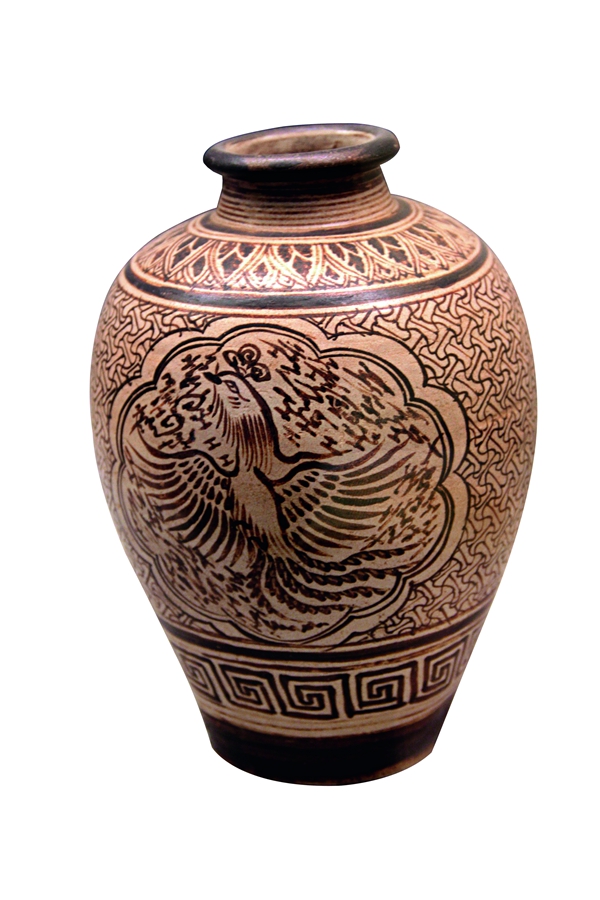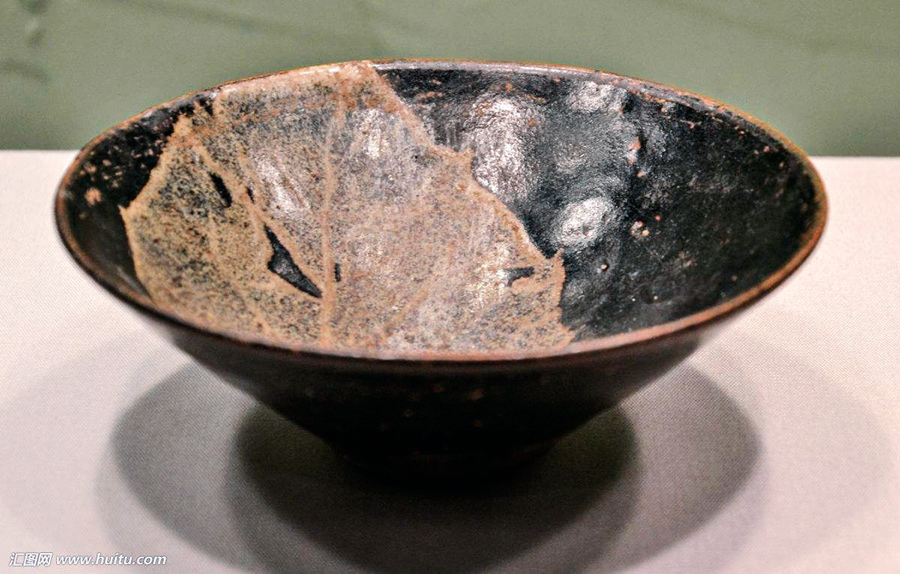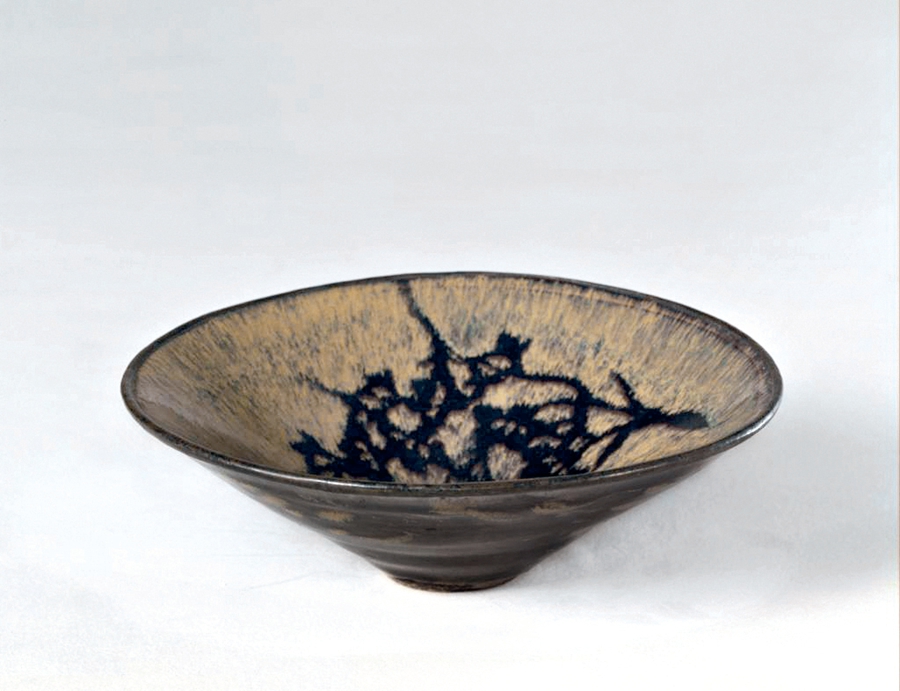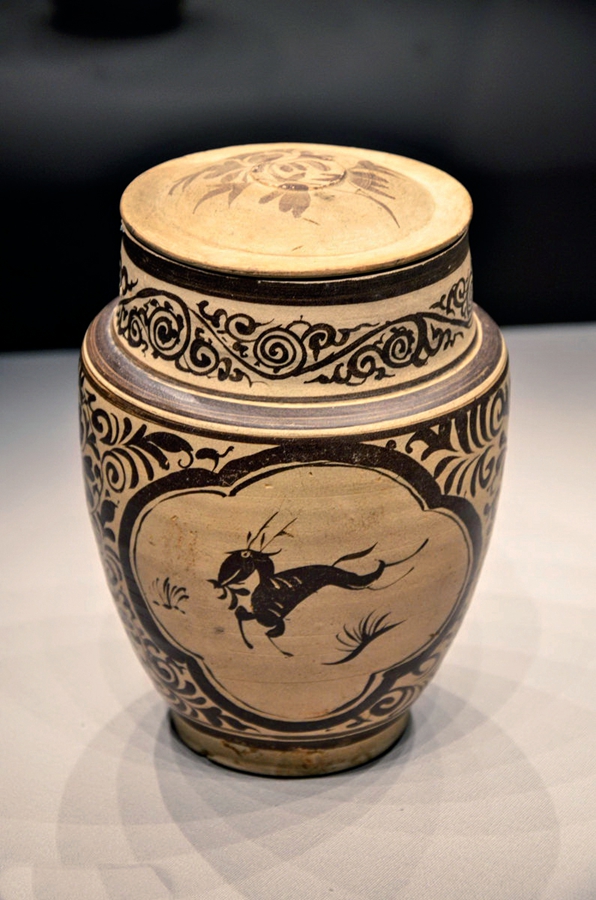CHINESE people love tea and as such, have a developed tea culture that puts a great emphasis on teaware. During the Song Dynasty (960-1279), tea contests were all the rage among scholars and intellectuals, who preferred black-colored wares. As a result, many kilns devoted themselves to producing black chinaware. The best producers were those in Jizhou, today’s Ji’an, Jiangxi Province.

Jizhou ware is distinguished by the unassuming air and aesthetics of the ethnic Han people. Their most popular designs include a leaf pattern and a paper-cutting pattern.
The best-preserved ancient kilns in China, the 1200-year-old Jizhou kilns were first built in the mid to late Tang Dynasty (618-907), thrived in the Song Dynasty and began to decline at the end of the Yuan Dynasty (1271-1368). Because they were privately owned, they had more autonomy over the kinds of ceramics they wished to produce. The Jizhou kilns also had an enormous amount of output. Most of their products were made for daily use, such as bowls, jars, kettles, incense burners, and pillows. The glaze used for different wares came in a variety of colors and shades, including celadon, green, white, and black. Some items also bear painted patterns. This great variety in function, shape, color, and design, combined with a large production output and jaunty artistic style, gives Jizhou ware a special position in the history of Chinese ceramics.

Leaf-Patterned Jizhou Ware
Housed in the Jiangxi Provincial Museum, this black-glazed teaware is believed to be from the early stage production of Tianmu wares of similar design, and is therefore of great value.
Jizhou kilns widely borrowed technology from peers to take on a life of their own. For instance, they adopted the stacking method in the firing process invented by the kilns in Dingzhou, which significantly increased output. They also learned how to overglaze and underglaze colors from the kilns in Cizhou, glaze transmutation techniques from kilns in Juntai, as well as the “hare’s fur” and “partridge feather” designs from kilns in Jian’an. This inclusiveness and resulting richness had a lasting impact on the evolution of China’s ceramic technologies.

Jizhou Bowl with Paper-Cut Prunus Design
Among the collection in the Beijing Palace Museum, this piece is emblazoned with Prunus flowers on a backdrop of the “hare’s fur” pattern inside. The outer surface mimics a tortoise shell. The opening is broad, and tapers steeply to a narrow bottom, a typical shape of Song chinaware.
The black-glaze Jizhou ware is also called Tianmu, or Heavenly Eye ware. The materials used to make its glaze were inexpensive, but were rendered to produce kaleidoscopic effects using unique techniques. The Tianmu ware combines functionality and artistry, characteristic of the art of the masses.
A signature design of the Tianmu ware is leaf appliqué, which comes in the forms of a half leaf, a whole leaf, or two to three overlapped leaves. To produce this effect, the leaf is soaked in water until only the skeletal is left. It is then placed on the surface of the ceramic item, already glazed in black, before being covered in a translucent yellow glaze and fired in the kiln. The result is a sepia-hued lace-work of veins against a dark backdrop.

Jizhou Covered Jar with Deer Painting
An exhibit at the Jiangxi Provincial Museum, this item was painted with pigment containing iron on a beige surface before a transparent glaze was applied. After firing, the pigment took on a tan color. The painting on it displays a deer carrying a Ganoderma, a symbol of longevity in Chinese culture.
The surface of Jizhou ware is not as smooth compared to many other porcelain items, but shows a beautiful sheen in water. The effect is enhanced on the pitch-black Tianmu ware, whose vein marks on the bottom create an illusion of fallen leaves after a rain shower when the vessel is filled with tea. This is what makes Jizhou ware unparalleled among ceramic Chinese teaware.
Jizhou potters also incorporated paper-cutting art into their creations, which was widely popular among the public. Some Jizhou wares are decorated with paintings about local life, which are now valuable records of the social activities and customs from 1,000 years ago.
As a major sect of Chinese ceramics, Jizhou ware has been exported to Europe and the Middle East since ancient times, and was loved by local aristocrats, boosting both international trade and cultural exchanges.
SONG XIAOYAN is a course planner of antique chinaware at the Ancient Porcelain Courtyard Museum.